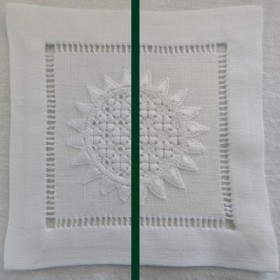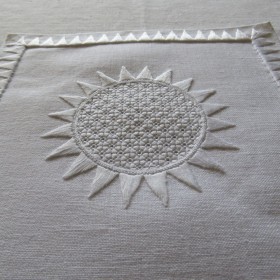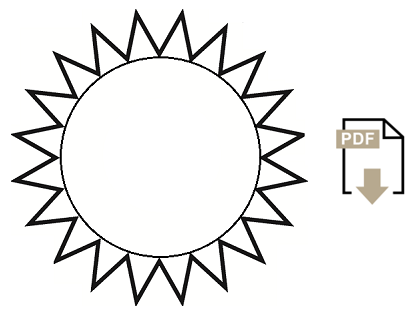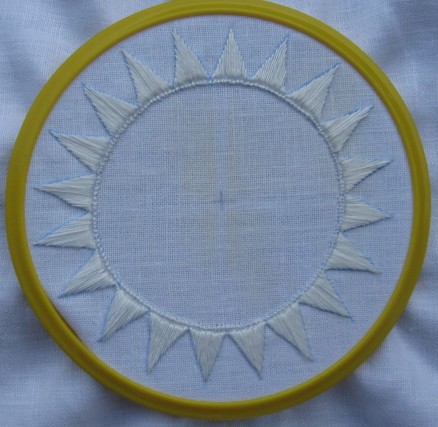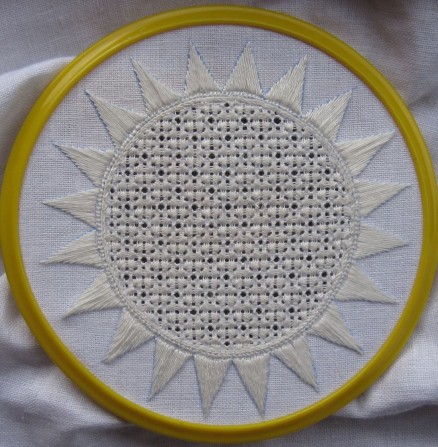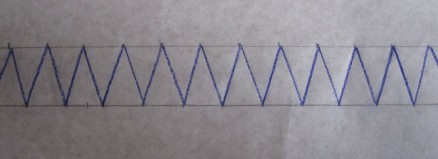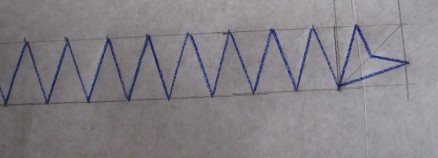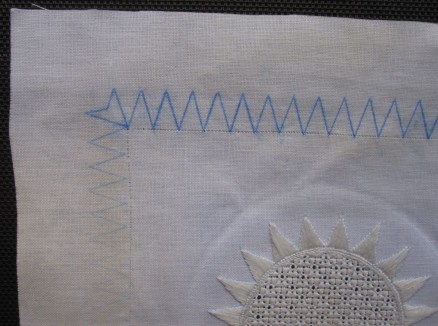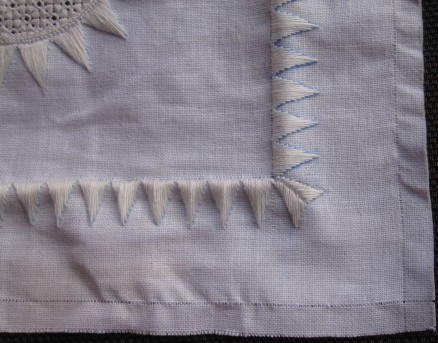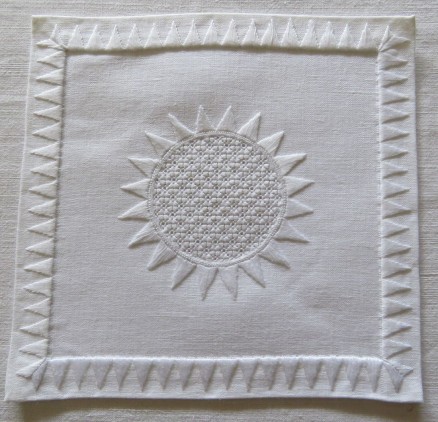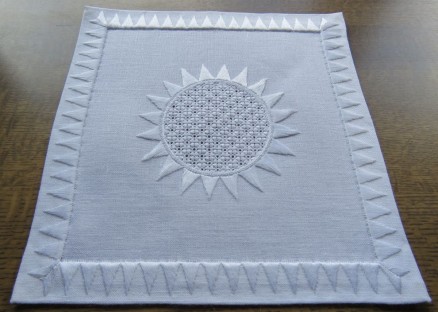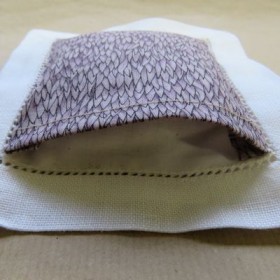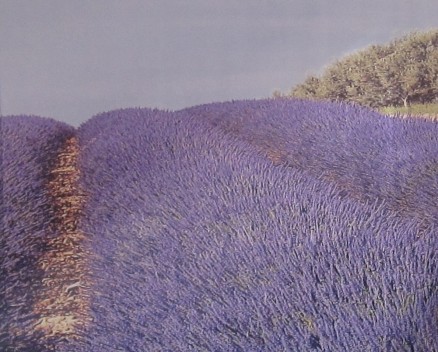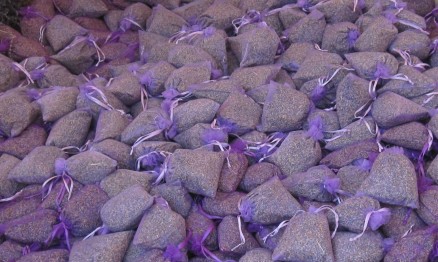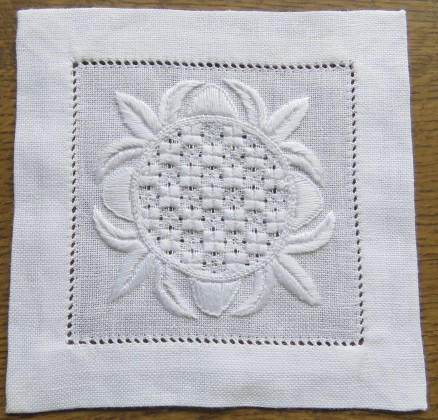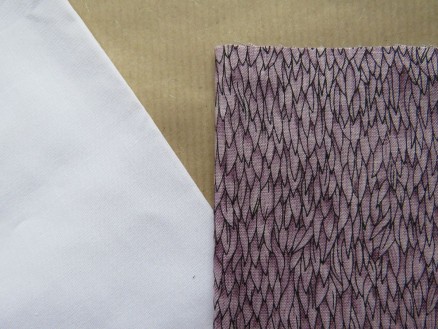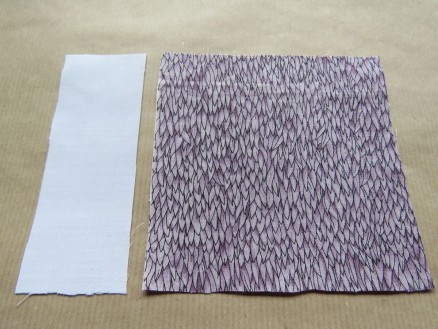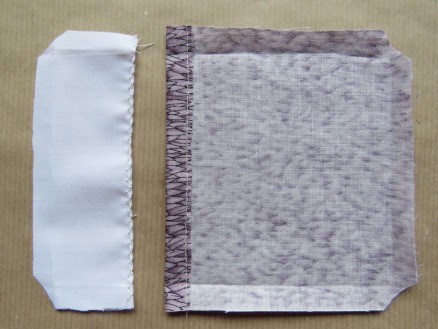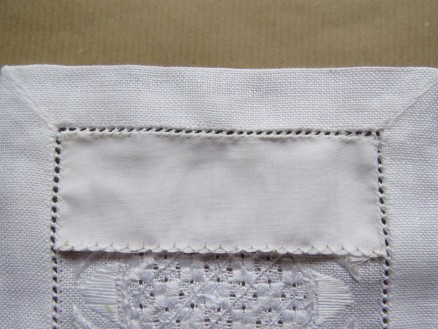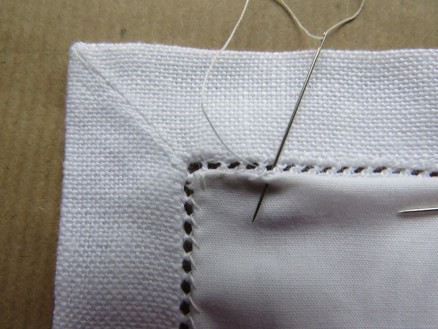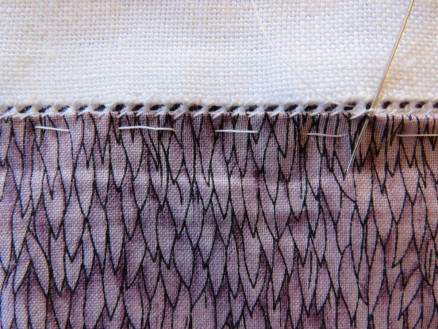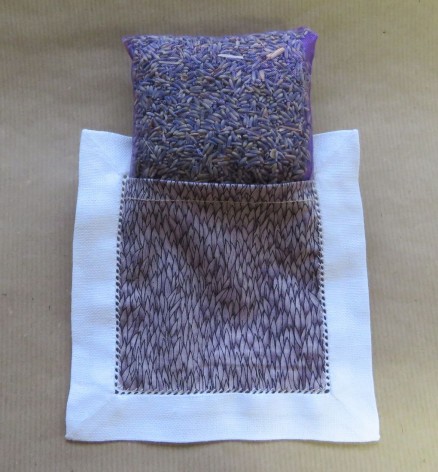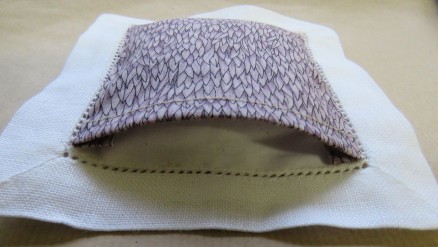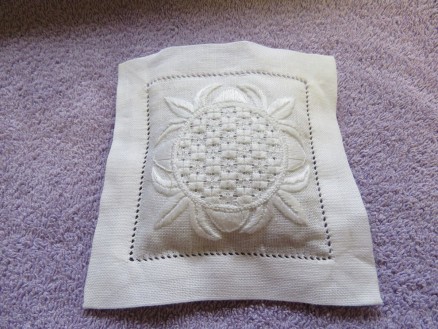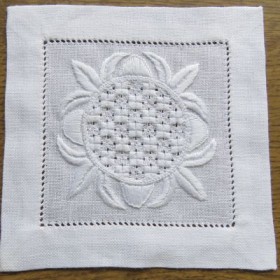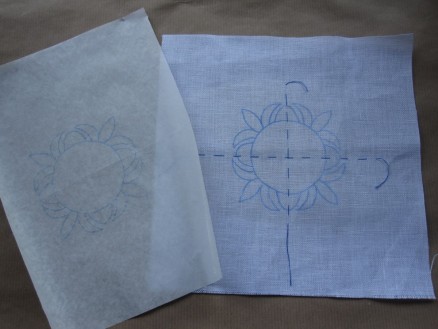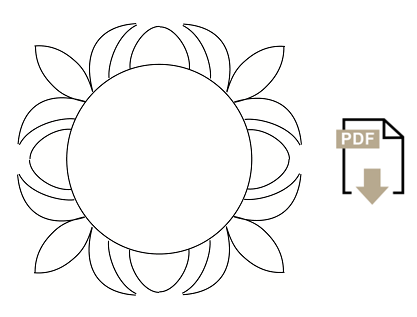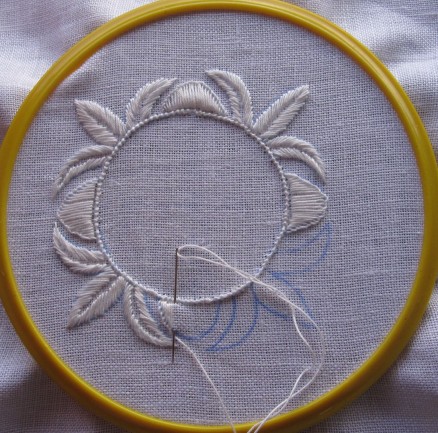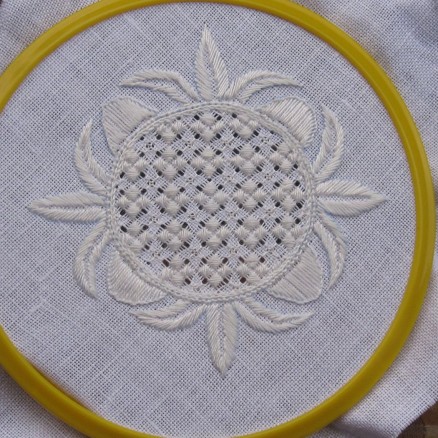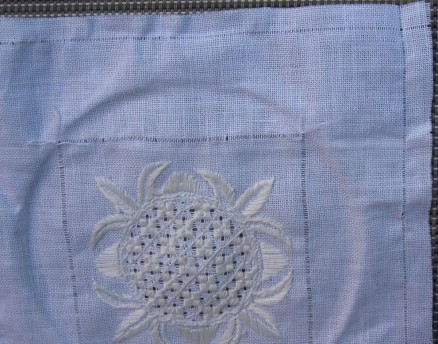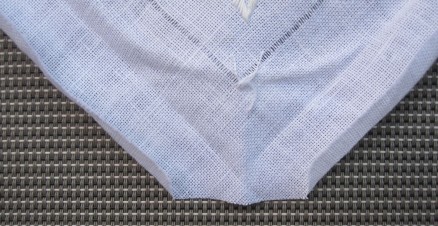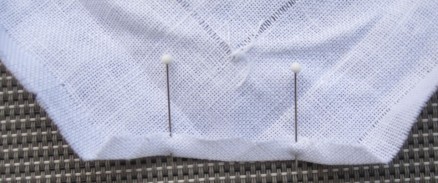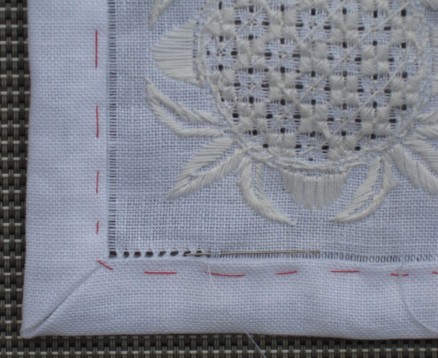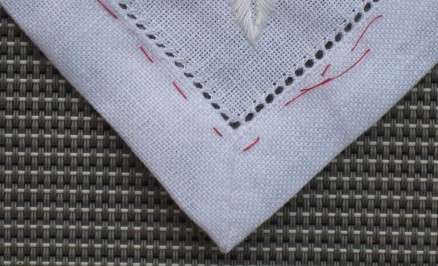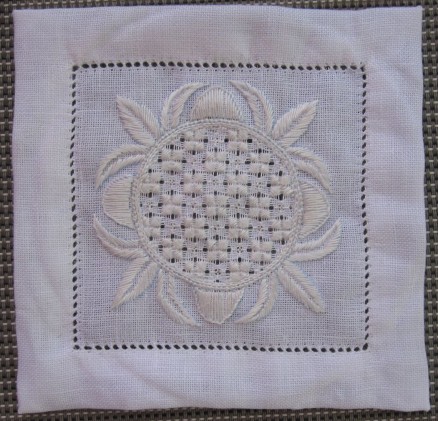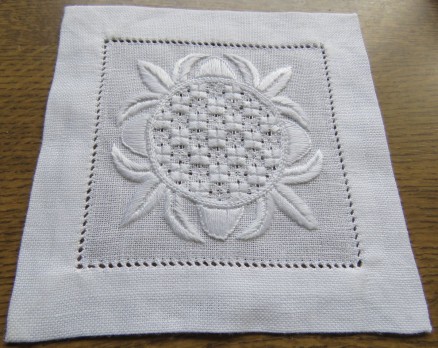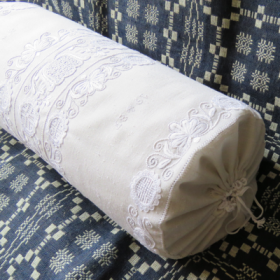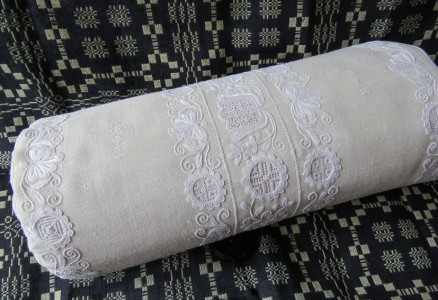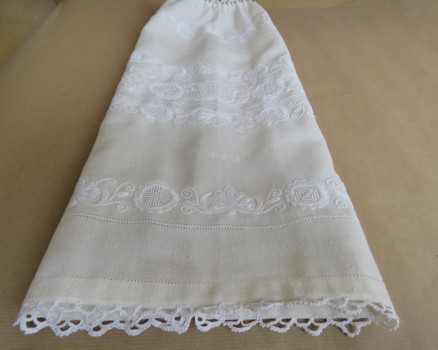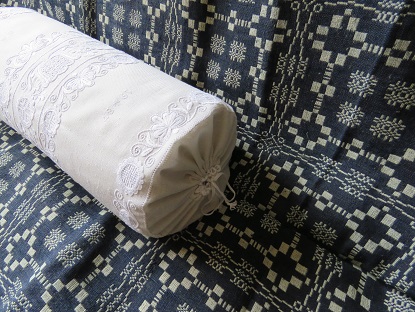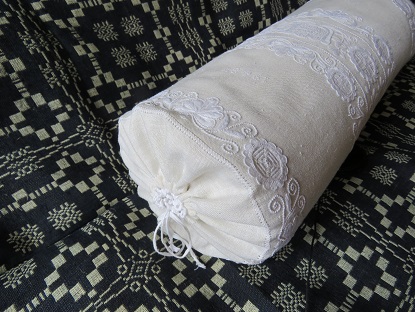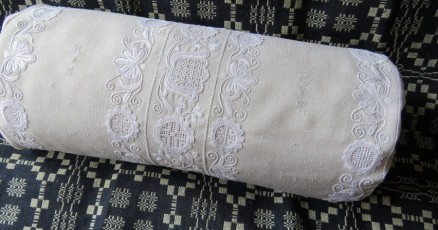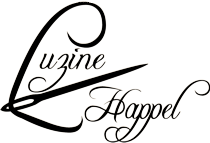Four small doilies, two with a center design and two without a design, are worked.
The design, a circle with knife points, is transferred to the center of two pieces of linen (13.5/cm thread count) measuring 20 cm X 20 cm each.
The original design measures 8.5 cm in diameter.
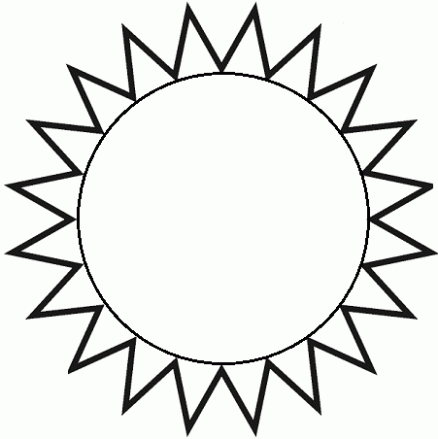
Coral Knot stitches are worked along the circle line using coton à broder No. 16.
Using coton à broder No. 20, work knife points with Blanket stitches on one design and pointed half-eyelet scallops on the second design.
Inside the Coral Knot stitches, Chain stitches are worked using coton à broder No. 25.
Both circles are filled with patterns similar to 475, using coton à broder No. 30.
A hem depth of 2 cm (+ 1 cm fold) is chosen.
So, for the basic line of the hem, a thread is withdrawn 5 cm in from the edges, and a second thread, inward of the thread just removed and leaving 4 threads remaining between, is also withdrawn. The remaining four threads are cut about 1 cm from the corner. The thread ends are withdrawn. For the fold a thread is withdrawn 1 cm from the edges.
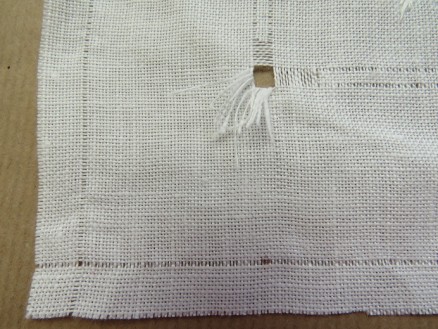
For the next steps please look to the small doily article.
The 1 cm fold and the 2 cm hem is marked by creasing the linen using your thumbnail or other tool.
The corner is trimmed on the bias 1 cm outside the intersection of the creased hem lines.
The 1 cm, bias-cut seam allowance at the corner is folded back, the hem is laid into place, basted, and secured with hem stitches.
Hem stitches are also worked along the inside withdrawn thread line, always bundling the same threads as bundled before.
The corners are sewn with small invisible hand stitches.
The basting threads are removed. Also the remaining four threads are withdrawn now.
In the end four small doilies are finished, two without a design,
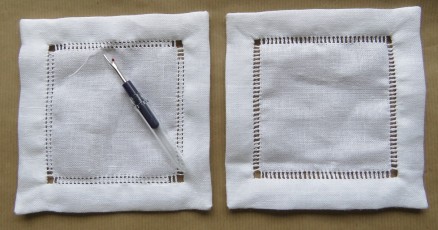
one with a Blanket stitch knife point design filled with pattern 476
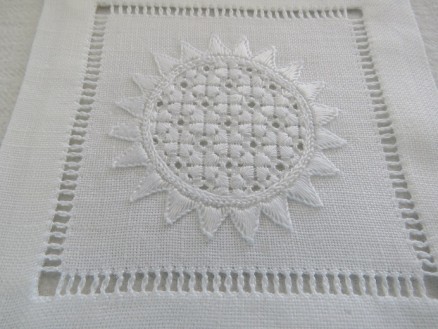
and one with a pointed half-eyelet scallop design filled with pattern 477.
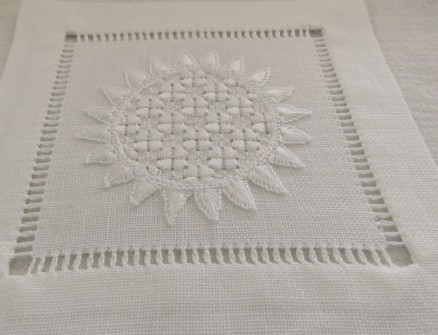
All are washed, starched and ironed and then finished to become ornaments. You will see the final results next week.
